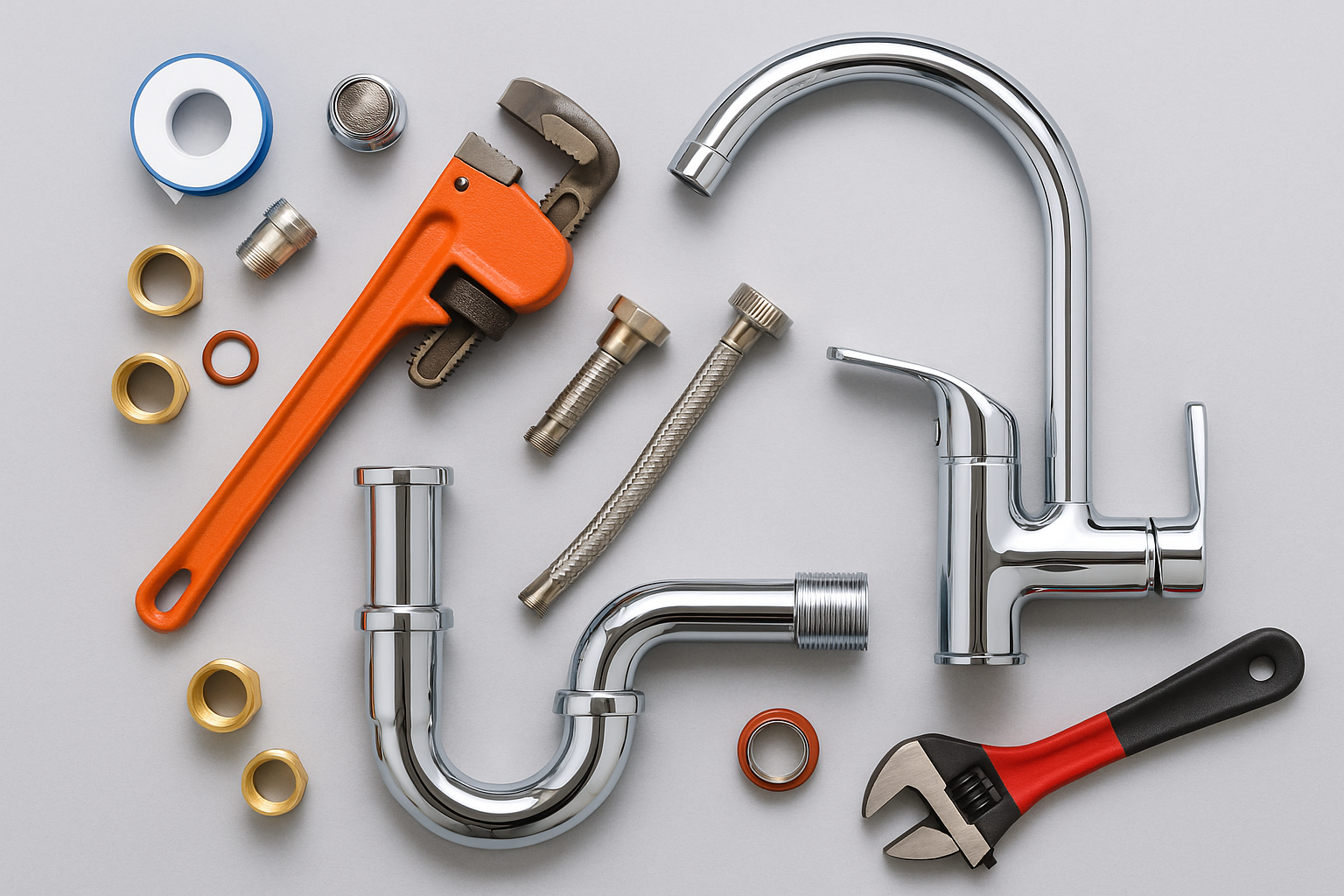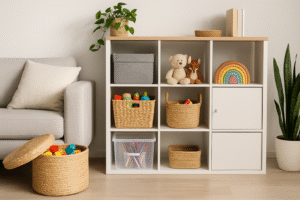Plumbing issues often show up fast. A dripping faucet clogged toilet or slow drain can throw off your whole day. These problem usually feel urgent. They also create worry about water damage or costly repairs.
You don’t always need to panic. Many plumbing fixes are simple. You can handle them with basic tool and a little patience. Doing these repairs yourself saves time. It also keeps more money in your pocket.
Not every job is safe or easy. Some repairs involve gas lines, electrical parts, or deep pipe issues. Trying to fix those without training can cause bigger problems.This guide gives you clear steps for common plumbing problems. It also help you decide when calling a plumber is the smarter move.
Fix a Leaky Faucet
A dripping faucet waste water fast. It also pushes your water bill higher. Most of the time a worn washer or seal causes the leak.Start by turning off the water supply. This step prevents mess and damage. Then remove the handle using a screwdriver. Look inside and check the washer or O ring. If it look cracked or worn swap it out with a new one.
Put everything back in place and turn the water on. The drip should stop if the washer was the issue.
A faucet that keep leaking may have rust or cracks inside. These problem need more than a quick fix. A plumber can spot the damage and replace the full unit if needed. Fixing it early keeps water from soaking cabinet or floor.
Unclog Drains
Clogged drains slow everything down. Water build up in sink tub and shower. The mess gets worse if you wait too long.Start by removing any gunk you can see. Pull out hair soap chunk or food scrap near the drain opening. Then grab a plunger. Place it over the drain and push firmly to break up the blockage.
If that doesn’t work, try a drain snake. Push it in slowly until it hits the clog. Twist and pull to remove the debris. Hair and soap often clog bathroom drains. Kitchen pipe usually jam from grease or food waste.
Skip harsh chemical cleaner. They can eat away at your pipe and cause leaks later.A drain that keep clogging signal a deeper issue. You might have a pipe problem that needs pro tools. A plumber can inspect the line and clear out anything stuck farther down. Fixing it early keep your plumbing flowing right.
Fix a Running Toilet
A running toilet wastes gallon of water every day. It also raises your utility bill fast. The problem usually comes from a bad flapper or a faulty fill valve.Start by turning off the water supply. Then flush the toilet to empty the tank. Remove the tank lid and check the flapper at the bottom. If it look worn or does not seal well replace it with a new one.
Next check the fill valve. Watch how it works as the tank refill. It should stop the water once it reach the right level. If it keeps running or refills unevenly the valve need adjustment or replacement.These small part are easy to find and install. Most hardware store carry them.
If the toilet still runs after you fix both part something deeper may be wrong. You could have a leak in the flush system or a cracked part inside the tank. A plumber can spot the problem fast and stop the waste before it grow worse.
Replace a Showerhead
A new showerhead can make showers feel better. It also help cut down water use and lower your bill. Replacing one take just a few minute.Start by twisting off the old showerhead. Use a soft cloth or rag if you need a wrench. That protect the finish from scratches.
Once it off clean the pipe thread. Wipe away old tape dirt or buildup. Then wrap fresh plumber tape around the thread. This help seal the connection and stop leak.Screw the new showerhead onto the pipe. Tighten it gently by hand. Use a wrench only if needed. Don’t overtighten—it can crack the fixture.
Turn on the water. Let it run for a minute. Watch for drip around the connection.If it leak even after tape and tightening, the problem may be deeper. You could have a cracked pipe or damaged fitting inside the wall. A plumber can check it and make sure everything work right.
Restore Water Pressure
Low water pressure makes daily task harder. Faucets trickle. Showers feel weak. It also signals trouble in your plumbing system.Check if the problem affect one faucet or the whole house. If it just one remove the faucet aerator. Clean out any dirt or mineral buildup. Rinse it well and screw it back on.
Look under sinks and around visible pipe. A hidden leak can lower pressure fast. Wet spot or puddles point to damaged connection.Then check your main shut off valve. It should stay wide open. Sometimes, pressure drops because the valve is only halfway open after a repair.
If pressure stays low everywhere, you may have buildup inside the pipes. Old pipes collect minerals that block flow. Rust or scale can close the space inside.A plumber uses special tools to clean or replace those sections. Fixing the pressure early keeps your system running strong.
Seal Pipe Leaks
Small pipe leaks cause big problems fast. Even a slow drip can soak cabinet or floor. The damage adds up if you wait too long.Start by turning off the water. Dry the pipe completely. Moisture makes tape and sealant less effective. Once dry, wrap the leak with waterproof tape. Stretch it tight and cover a few inches on both sides of the crack.
Add pipe sealant over the tape if you want extra hold. This can slow the leak until you get a proper fix.These are short-term solutions. They work for exposed pipes in easy-to-reach spots. They won’t help with leaks behind walls, under floors, or in ceilings.
Those hidden leaks need expert care. A plumber can open the area find the source and replace the damaged section. Fixing it early prevent mold rot and high water bill.
Maintain Your Water Heater
A reliable water heater keep shower warm and dishes clean. It also helps your system run efficiently. Basic maintenance can extend it life and prevent surprise breakdown.Drain the tank once a year. This removes sediment that builds up at the bottom. Use the drain valve near the base and empty it into a bucket or outside.
Test the pressure relief valve next. Lift the lever and let it snap back. You should hear a quick release of water or air. If nothing happens, the valve may be stuck.Set the thermostat to 120 degrees. This saves energy and prevents scalds. Higher settings add strain and raise costs.
Look for signs of trouble. Leaks, rust, or strange popping sounds mean something’s wrong. Shut off the power or gas immediately. Then turn off the water supply.Call a plumber to inspect it. Water heaters involve high heat, pressure, and in some cases, gas lines. A pro can fix it safely and keep everything running right.
Fix Garbage Disposal Jams
Garbage disposals often jam without warning. Food gets stuck. The blades stop moving. The unit hums but won’t grind.Start by unplugging the disposal. This keeps you safe while working. Never stick your hand inside.
Look under the unit. Find the small hex-shaped hole in the center. Insert an Allen wrench. Turn it back and forth to loosen the jam inside.Once the blades move freely, press the reset button under the disposal. This resets the motor after a jam or overload.Avoid dropping bone peel or stringy food like celery into the disposal. These items wrap around the blades or clog the drain.
If the unit still hums or leaks water, stop using it. You may have a motor failure, broken seals, or damaged parts. Call a plumber. Fixing it yourself can lead to injury or worse damage. A pro can repair or replace it safely.
Unclog a Toilet
Toilet clogs happen often. They’re messy and frustrating. Most of the time, you can fix them yourself.Start with a flange plunger. It has a rubber cone that seals tightly around the drain. Press it down firmly. Then pull up to create pressure. Repeat this motion several times.
If water doesn’t drain, use a toilet auger. Slide it into the bowl and twist until it breaks through the blockage. Pull it back out and flush the toilet.Never flush wipe paper towel or hygiene product. Even “flushable” wipes cause clogs over time. Stick to toilet paper only.
If clogs return again and again, you might have a deeper problem. A blocked sewer line or bad drain pipe could be the reason. A plumber can run a camera into the line and find the issue fast. Fixing it early keeps waste where it belongs.
Replace a Faucet Cartridge
A faucet that leaks or turns stiff may have a worn cartridge. This small part controls water flow and temperature. Replacing it often solves the problem fast.Turn off the water supply first. Turn on the faucet to release leftover water. Then remove the handle using a screwdriver. Then pull out the cartridge with pliers or a removal tool.
Take the old cartridge to a hardware store. Match it exactly. Faucets often need brand-specific parts. Buying the wrong one wastes time.Once you have the right part, slide it into place.
If it still leak or turns rough, the issue may run deeper. A cracked valve or damaged fixture could be the cause. A plumber can check it and replace the full unit if needed. This keeps your plumbing system working right.
Check the Sump Pump
A sump pump protect your basement from flooding. It move water out before it can rise and cause damage. Testing it often keeps it ready for heavy rain.
Start by pouring water into the sump pit. Add enough to raise the float. The pump should turn on right away and drain the water fast.
If nothing happens, check the power. Make sure the unit is plugged in and the breaker is on. Then look inside the pit. Remove any leave dirt or debris blocking the float or intake.
A pump that run nonstop or fail to start may be worn out. Faulty switche wiring problem or burned out motors often cause this.
Do not try to rewire or repair the motor yourself. Electricity and water are a risky mix. A plumber or technician can test the system replace bad part or install a new pump. Acting early keep your basement safe and dry.
Know When to Call a Pro
Some fixes are safe and easy. You can unclog drain swap cartridges, and seal leaks. Other jobs need more skill and better tools.
Call a plumber when:
-
Leaks stay hidden or hard to reach
-
Water pressure won’t return
-
Pipes break or burst
-
Fixtures leak even after repairs
-
You see mold, flooding, or bad smells
A good plumber protects your home. The cost saves you from bigger losses.
Final Thought
DIY plumbing help you save money and build confidence. Fixing small issues on your own feels good. You take control and keep your home in shape.Start with simple jobs. Replace a showerhead. Unclog a drain. Tighten a loose pipe. These tasks teach you basic skills without much risk.
Work slowly and follow each step. Use the right tools. Stop if things feel uncertain. A wrong move can turn a small fix into a costly mess.Call a plumber when the job goes beyond basic repair. Leak behind wall gas water heater and sewer line problem need expert hand.
Making the smart call early avoids bigger damage later. It also give you peace of mind. You do not need to do everything yourself but knowing what you can handle makes a big difference.




